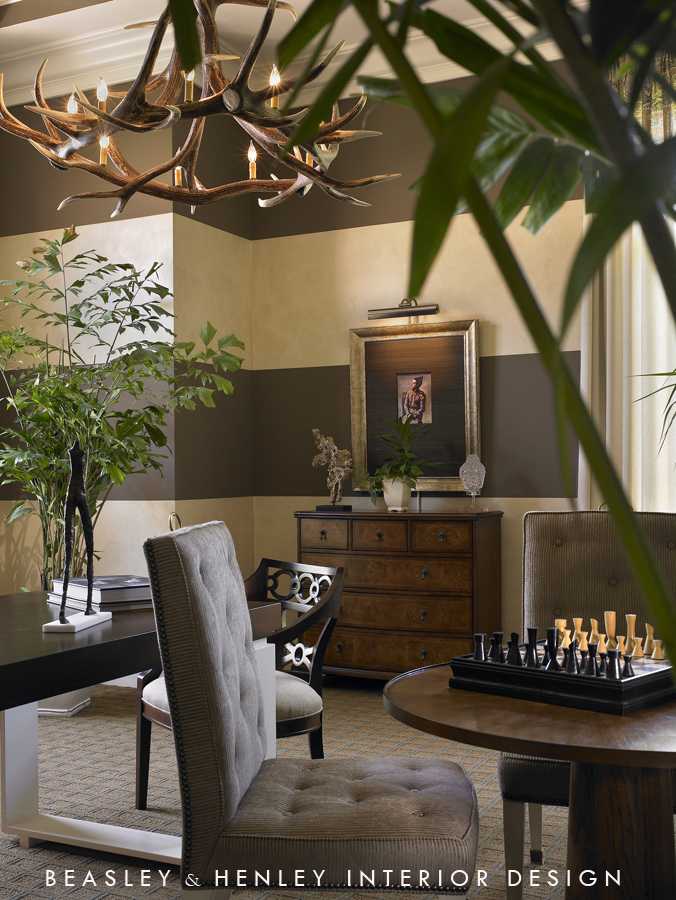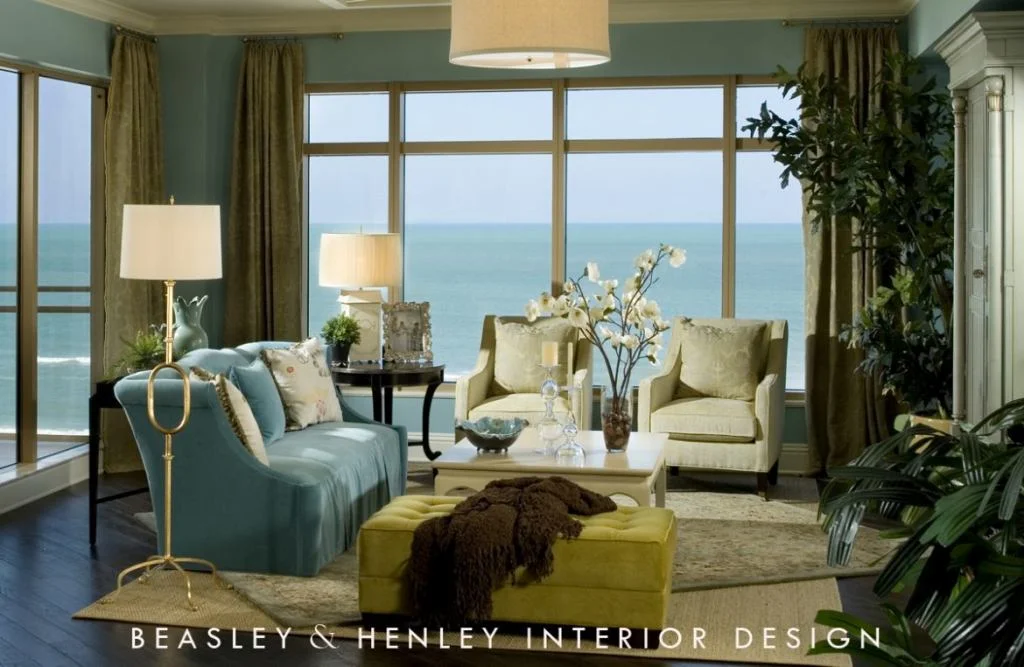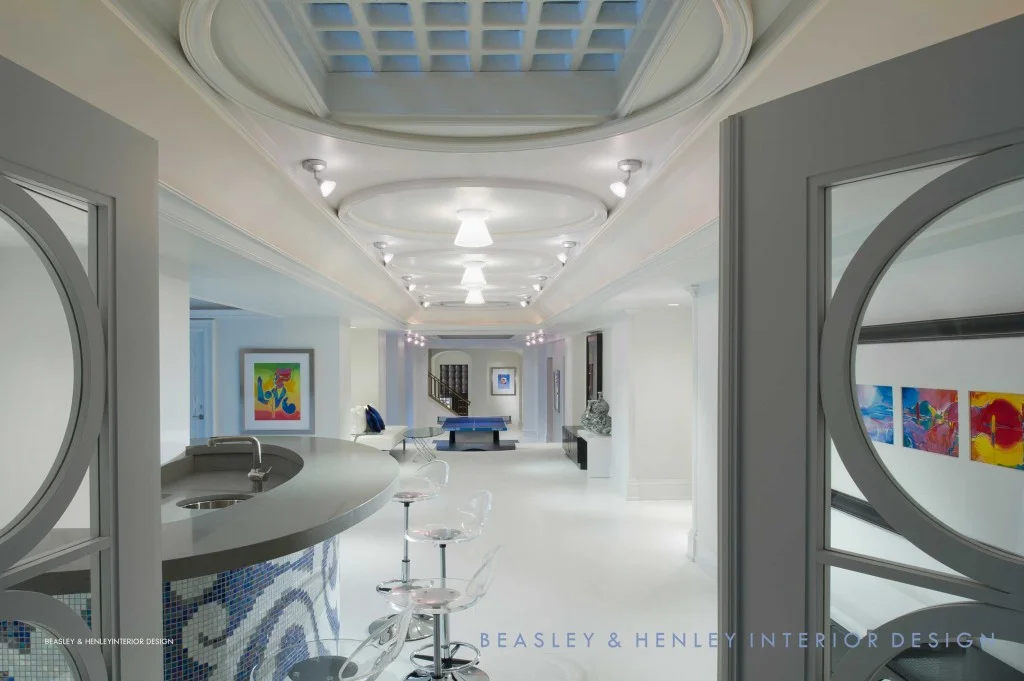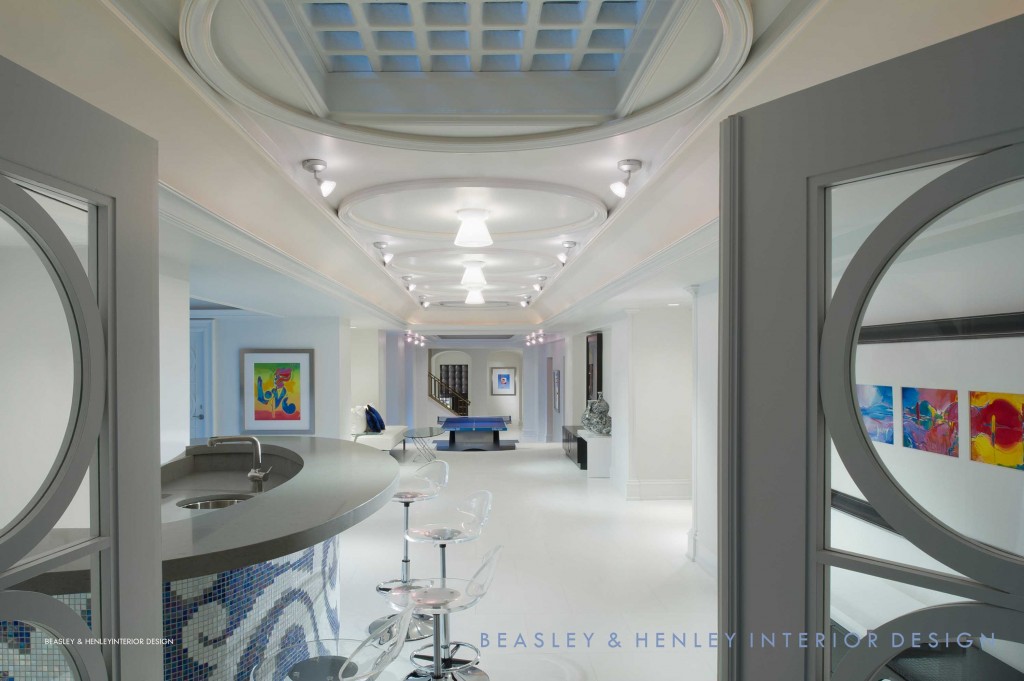As Featured in “Best In American Living” Magazine (Spring 2013)
 Lumens. Lamps. Kelvins. CFLs. LED. How did the world of lighting come to be so complicated when all we used to do is flip a switch?Like most things in design, lighting is more sophisticated and offers more choices than ever. It is computerized, integrated and vastly more interesting for designers and consumers alike.It is vital to our homes and our well being, making lighting one of the most important elements in design. Lighting decisions made for a space can influence all future experiences including how colors are perceived, what furniture can be used, and perhaps most importantly, what mood will be created for its occupants.Plan AheadA good lighting plan sets the stage. It begins with a simple 3-point checklist of the light that is available and the lighting that is needed for the uses of the space. Using one of these is a necessity; using two or all three can layer a room with depth of color and a visual comfort.Natural sunshine is usually the most desired lighting. Homeowners love to capture the warm feeling that sunlight provides, making it a natural resource for builders. To capitalize on this and maximize its effect, architects can confirm the orientation of main rooms and make sure there is plenty of window space to allow an abundance of sun. Interior designers also can ensure that windows are unobstructed by heavy draperies or large pieces of furniture that would intrude into the sunlit world.
Lumens. Lamps. Kelvins. CFLs. LED. How did the world of lighting come to be so complicated when all we used to do is flip a switch?Like most things in design, lighting is more sophisticated and offers more choices than ever. It is computerized, integrated and vastly more interesting for designers and consumers alike.It is vital to our homes and our well being, making lighting one of the most important elements in design. Lighting decisions made for a space can influence all future experiences including how colors are perceived, what furniture can be used, and perhaps most importantly, what mood will be created for its occupants.Plan AheadA good lighting plan sets the stage. It begins with a simple 3-point checklist of the light that is available and the lighting that is needed for the uses of the space. Using one of these is a necessity; using two or all three can layer a room with depth of color and a visual comfort.Natural sunshine is usually the most desired lighting. Homeowners love to capture the warm feeling that sunlight provides, making it a natural resource for builders. To capitalize on this and maximize its effect, architects can confirm the orientation of main rooms and make sure there is plenty of window space to allow an abundance of sun. Interior designers also can ensure that windows are unobstructed by heavy draperies or large pieces of furniture that would intrude into the sunlit world. Ambient or general room lighting is the next layer, compensating when natural light is insufficient. There are many attractive overhead fixtures that provide ambient light, such as, chandeliers, pendants or a series of halogen-lighted recessed cans. If an overhead isn’t possible, lamps or wall fixtures with floodlighting for ambient lighting provide good general lighting.Task or specialty lighting is used to illuminate specific items or specialty areas and leads to some of the most creative lighting designs. For example, a pin light from the ceiling can spot a piece of artwork. Wall washers can highlight a gallery. Under-cabinet halogen lights in the kitchen or on a large bookshelf can counteract cabinet shadows and also provide task lighting at the same time. Cove lighting in a ceiling design provides soft mood lighting.Style and Scale MatterThe next step of that plan should consider the finishing touches. Too often lighting fixtures are treated as an afterthought when in reality decorative finishes are as integral to the overall design of a room as the sofa style, paint color or cabinet designs.Two of the top lighting ‘sins’ are using fixtures that are out of date and fixtures that are under-scaled. It is unfortunate to see an attractive, well-built home cheapened by the use of small, dated or unimaginative fixtures whose only redeeming quality is low price.Be aware of new trends in lighting design such as bold, oversized lights, drum chandeliers, eclectic styling such as incorporating antlers and recycled materials, industrial-influenced styles, large oblong or oval pendants, pieces that are jeweled and brightly colored. These are just a few of the today’s new design options.The Light Bulb Race
Ambient or general room lighting is the next layer, compensating when natural light is insufficient. There are many attractive overhead fixtures that provide ambient light, such as, chandeliers, pendants or a series of halogen-lighted recessed cans. If an overhead isn’t possible, lamps or wall fixtures with floodlighting for ambient lighting provide good general lighting.Task or specialty lighting is used to illuminate specific items or specialty areas and leads to some of the most creative lighting designs. For example, a pin light from the ceiling can spot a piece of artwork. Wall washers can highlight a gallery. Under-cabinet halogen lights in the kitchen or on a large bookshelf can counteract cabinet shadows and also provide task lighting at the same time. Cove lighting in a ceiling design provides soft mood lighting.Style and Scale MatterThe next step of that plan should consider the finishing touches. Too often lighting fixtures are treated as an afterthought when in reality decorative finishes are as integral to the overall design of a room as the sofa style, paint color or cabinet designs.Two of the top lighting ‘sins’ are using fixtures that are out of date and fixtures that are under-scaled. It is unfortunate to see an attractive, well-built home cheapened by the use of small, dated or unimaginative fixtures whose only redeeming quality is low price.Be aware of new trends in lighting design such as bold, oversized lights, drum chandeliers, eclectic styling such as incorporating antlers and recycled materials, industrial-influenced styles, large oblong or oval pendants, pieces that are jeweled and brightly colored. These are just a few of the today’s new design options.The Light Bulb Race While the level of lighting and look of fixtures are important to design, so are the color and quality of the light cast by these fixtures. For generations, we have been accustomed to the warm glow of the incandescent bulb emitting color in the range of 2,700 degrees kelvin (see chart). Unfortunately, 90 percent of the energy produced by incandescents is used to generate heat. Only 10 percent actually produces the light. Recent changes in the law aimed at improving lighting efficiency, coupled with improvements to alternative bulbs, have shaken the foundation of the inefficient incandescent.The closest alternative bulb to the incandescent is the halogen. This bulb looks and acts like an incandescent with the low price and warm light that consumers are accustomed to, but uses much less energy. Still, halogen bulbs produce significant heat making them less energy efficient than the newer alternatives, such as fluorescents.Fluorescents are one of the most available and easy-to-use new bulbs. In many situations compact fluorescent light bulbs (CFLs)—screw-in fluorescents light bulbs—can take the place of incandescent bulbs. They cast light across a wide space, which is why they are traditionally used in office settings. They last up to 10 times longer than standard incandescent bulbs and use 20 to 40 percent less electricity, making it easy to see why they are so appealing.However, fluorescent lighting in home applications has a long way to go before it will win over designers. The color and quality of the light from florescent bulbs – in the range of 4,000-6,500 kelvin – create a cool, bluish white cast. While these lights are improving, most designers still favor the warm light and color cast by incandescent or halogen bulbs.LED lights also are in the race for the next, best light source. These bulbs come in long flexible strips for use in small spaces or across curves, such as for cove lighting. In light bulb form, they are mainly used in recessed cans. They can be dimmed and have the longest life span of the any type of bulb. LEDs also have the advantage over fluorescents of being available in smaller and flexible strip formats. Like fluorescents, LEDs’ efficiency and longevity are remarkable, but so is the price tag at $20 or more per bulb. Currently, the light cast by LED is very bright with a cool, blue tint, but manufacturers are quickly refining this, getting ever closer to natural lighting.Integrated LightingDesigners today talk about integrated, whole house lighting, and while we think of these systems as high end, they are offered today at lower price points and several large builders are testing them out in mid-range communities as upgradable features.Whole house packages feature a variety of ways to control lighting throughout the home, and often are part of an integrated audio, temperature and security system. Buyers are drawn to the ease of use and the high-end feel of such systems.On a smaller scale, simple programmable scene controllers allow users to create different settings of lighting and dimming options for single rooms. These controllers turn on and off at the push of a button. It is only a matter of time before the price drops even further on integrated systems, and they become a standard feature in most homes.ConclusionThe intricate field of lighting design is going through interesting changes, offering new possibilities for uses, sources and styles, and allowing us to get the most for our lighting dollars.The American Lighting Association’s website (www.americanlightingassoc.com) is one of many good sources offering technical advice and details on specific lighting needs. Interior designers and lighting designers are another good source for information and ideas..
While the level of lighting and look of fixtures are important to design, so are the color and quality of the light cast by these fixtures. For generations, we have been accustomed to the warm glow of the incandescent bulb emitting color in the range of 2,700 degrees kelvin (see chart). Unfortunately, 90 percent of the energy produced by incandescents is used to generate heat. Only 10 percent actually produces the light. Recent changes in the law aimed at improving lighting efficiency, coupled with improvements to alternative bulbs, have shaken the foundation of the inefficient incandescent.The closest alternative bulb to the incandescent is the halogen. This bulb looks and acts like an incandescent with the low price and warm light that consumers are accustomed to, but uses much less energy. Still, halogen bulbs produce significant heat making them less energy efficient than the newer alternatives, such as fluorescents.Fluorescents are one of the most available and easy-to-use new bulbs. In many situations compact fluorescent light bulbs (CFLs)—screw-in fluorescents light bulbs—can take the place of incandescent bulbs. They cast light across a wide space, which is why they are traditionally used in office settings. They last up to 10 times longer than standard incandescent bulbs and use 20 to 40 percent less electricity, making it easy to see why they are so appealing.However, fluorescent lighting in home applications has a long way to go before it will win over designers. The color and quality of the light from florescent bulbs – in the range of 4,000-6,500 kelvin – create a cool, bluish white cast. While these lights are improving, most designers still favor the warm light and color cast by incandescent or halogen bulbs.LED lights also are in the race for the next, best light source. These bulbs come in long flexible strips for use in small spaces or across curves, such as for cove lighting. In light bulb form, they are mainly used in recessed cans. They can be dimmed and have the longest life span of the any type of bulb. LEDs also have the advantage over fluorescents of being available in smaller and flexible strip formats. Like fluorescents, LEDs’ efficiency and longevity are remarkable, but so is the price tag at $20 or more per bulb. Currently, the light cast by LED is very bright with a cool, blue tint, but manufacturers are quickly refining this, getting ever closer to natural lighting.Integrated LightingDesigners today talk about integrated, whole house lighting, and while we think of these systems as high end, they are offered today at lower price points and several large builders are testing them out in mid-range communities as upgradable features.Whole house packages feature a variety of ways to control lighting throughout the home, and often are part of an integrated audio, temperature and security system. Buyers are drawn to the ease of use and the high-end feel of such systems.On a smaller scale, simple programmable scene controllers allow users to create different settings of lighting and dimming options for single rooms. These controllers turn on and off at the push of a button. It is only a matter of time before the price drops even further on integrated systems, and they become a standard feature in most homes.ConclusionThe intricate field of lighting design is going through interesting changes, offering new possibilities for uses, sources and styles, and allowing us to get the most for our lighting dollars.The American Lighting Association’s website (www.americanlightingassoc.com) is one of many good sources offering technical advice and details on specific lighting needs. Interior designers and lighting designers are another good source for information and ideas..




Leave a Reply
You must be logged in to post a comment.